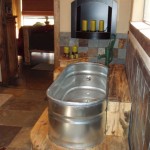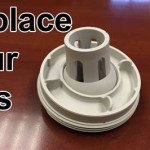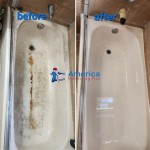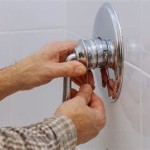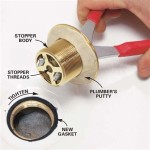Does Vinegar Unclog Bathtub Drain? Exploring the DIY Solution
A clogged bathtub drain can be a frustrating household problem. The accumulation of hair, soap scum, and other debris can impede the flow of water, leading to standing water and an unsanitary bathing environment. While numerous commercial drain cleaners are available, many individuals seek alternative, less harsh, and more environmentally friendly solutions. One common suggestion found online, particularly on platforms like Reddit, involves using vinegar, often in conjunction with baking soda, as a natural drain cleaner. This article explores the efficacy of using vinegar to unclog a bathtub drain, examining the science behind the method, its limitations, and alternative approaches.
Reddit threads discussing DIY drain cleaning solutions frequently mention vinegar as a key ingredient. Users often share anecdotal evidence of its success, detailing specific ratios of vinegar and baking soda, the duration of the treatment, and variations of the method. However, it is crucial to understand the underlying chemical reactions and potential effectiveness of vinegar before relying solely on this approach.
Understanding the Chemical Reaction: Vinegar and Baking Soda
The purported unclogging power of vinegar and baking soda stems from a simple acid-base reaction. Vinegar, specifically white vinegar, contains acetic acid (CH3COOH), a weak acid. Baking soda, or sodium bicarbonate (NaHCO3), is a weak base. When combined, they react according to the following chemical equation: CH3COOH(aq) + NaHCO3(s) → CH3COONa(aq) + H2O(l) + CO2(g). This reaction produces sodium acetate, water, and carbon dioxide gas.
The primary mechanism by which this mixture is believed to unclog drains is through the effervescence produced by the carbon dioxide gas. The fizzing action is thought to loosen debris and dislodge it from the drain walls, allowing it to be flushed away with water. However, the effectiveness of this mechanism hinges on several factors, including the severity of the clog and the specific composition of the blockage.
The reaction is self-limiting. The amounts of acetic acid and sodium bicarbonate will determine the amount of carbon dioxide produced. Once one or both reactants are consumed, the reaction ceases. In a drain, with a potentially large volume and a complex clog, the amount of gas generated might be insufficient to significantly impact a large or dense blockage.
Effectiveness on Different Types of Clogs
The effectiveness of a vinegar and baking soda solution largely depends on the nature of the clog. This method is most likely to be successful on minor clogs caused by soap scum, loose hair, and other easily dissolved or dislodged materials. The mild acidity of vinegar can help to break down soap scum, while the fizzing action can help to carry away loose particles.
However, for more stubborn clogs consisting of tightly packed hair, grease, or mineral buildup, the vinegar and baking soda solution may prove inadequate. These types of clogs often require stronger chemical solvents or physical removal using tools such as a drain snake or plumbing auger. Attempting to rely solely on vinegar for a significant clog may only provide temporary relief or fail to address the problem entirely, potentially leading to further accumulation and a more severe blockage.
The success of the vinegar method is also affected by the drain's design and the presence of standing water. If the drain is completely blocked and filled with water, the vinegar and baking soda mixture may be diluted, reducing its effectiveness. Moreover, the produced carbon dioxide gas may simply bubble up through the standing water without exerting significant force on the blockage.
Proper Method and Considerations
While the vinegar and baking soda method may not be a universal solution, it can be a useful first step for addressing minor bathtub drain clogs. The generally recommended method involves pouring approximately one cup of baking soda down the drain, followed by one cup of white vinegar. The drain should then be covered or plugged to contain the fizzing action.
It is crucial to allow the mixture to react for at least 30 minutes, or preferably several hours, to maximize its effectiveness. After the allotted time, flush the drain with hot water. This helps to wash away any loosened debris and clear the drainpipe. In some cases, repeating the process may be necessary to achieve the desired results. It is also advisable to run hot water down the drain regularly after each shower or bath to help prevent the buildup of soap scum and hair.
When using any drain cleaning method, it is important to exercise caution. While vinegar is generally considered safe, it can still irritate skin and eyes. Avoid direct contact with the solution and ensure adequate ventilation in the bathroom. If the vinegar and baking soda method proves ineffective, it is advisable to explore alternative solutions or consult a professional plumber.
The use of commercial drain cleaners, while effective, carries its own set of risks. Many commercial drain cleaners contain harsh chemicals that can damage pipes, particularly older pipes made of PVC or metal. Furthermore, these chemicals can be harmful to the environment and pose a health risk if not handled properly. It is always crucial to follow the manufacturer's instructions carefully when using commercial drain cleaners and to wear appropriate protective gear, such as gloves and eye protection.
Another consideration is the material of the drain pipes. While vinegar is generally safe for most types of pipes, prolonged or repeated exposure to acidic solutions can potentially corrode metal pipes over time. For older homes with metal plumbing, it may be prudent to use vinegar solutions sparingly or explore alternative drain cleaning methods. Plastic pipes are generally more resistant to corrosion but can still be damaged by excessively high temperatures.
Preventive measures are often the most effective way to avoid bathtub drain clogs. Installing a drain strainer or hair catcher can significantly reduce the amount of hair and debris that enters the drainpipe. Regularly cleaning the drain strainer and flushing the drain with hot water can also help to prevent buildup. Avoiding the disposal of greasy or oily substances down the drain is also crucial, as these materials can solidify and contribute to clogs.
For individuals seeking more sustainable and environmentally friendly drain cleaning solutions, enzymatic drain cleaners offer an alternative to harsh chemicals. These products contain enzymes that break down organic matter, such as hair and soap scum, without damaging pipes or harming the environment. They typically require a longer treatment time than chemical drain cleaners but are a safer and more sustainable option.
In conclusion, while the vinegar and baking soda method can be a useful first step for addressing minor bathtub drain clogs, its effectiveness is limited by the nature and severity of the clog. For more stubborn clogs, alternative solutions such as drain snakes, enzymatic cleaners, or professional plumbing services may be necessary.
Is There A Better Way To Unclog Bathroom Sink Than Draino R Homeimprovement

How To Unclog A Drain Without Calling Plumber

How To Clean Drains And Unclog Shower Or Sink

How To Easily Unclog Bathtub Shower Drain In 5 Minutes Jonny Diy

Never Clear A Blocked Sink With Baking Soda And Vinegar Use This Instead

Bathtub Won T Drain Here S What To Do Next

How To Unclog A Bathtub Diy I C Mechanical Inc

